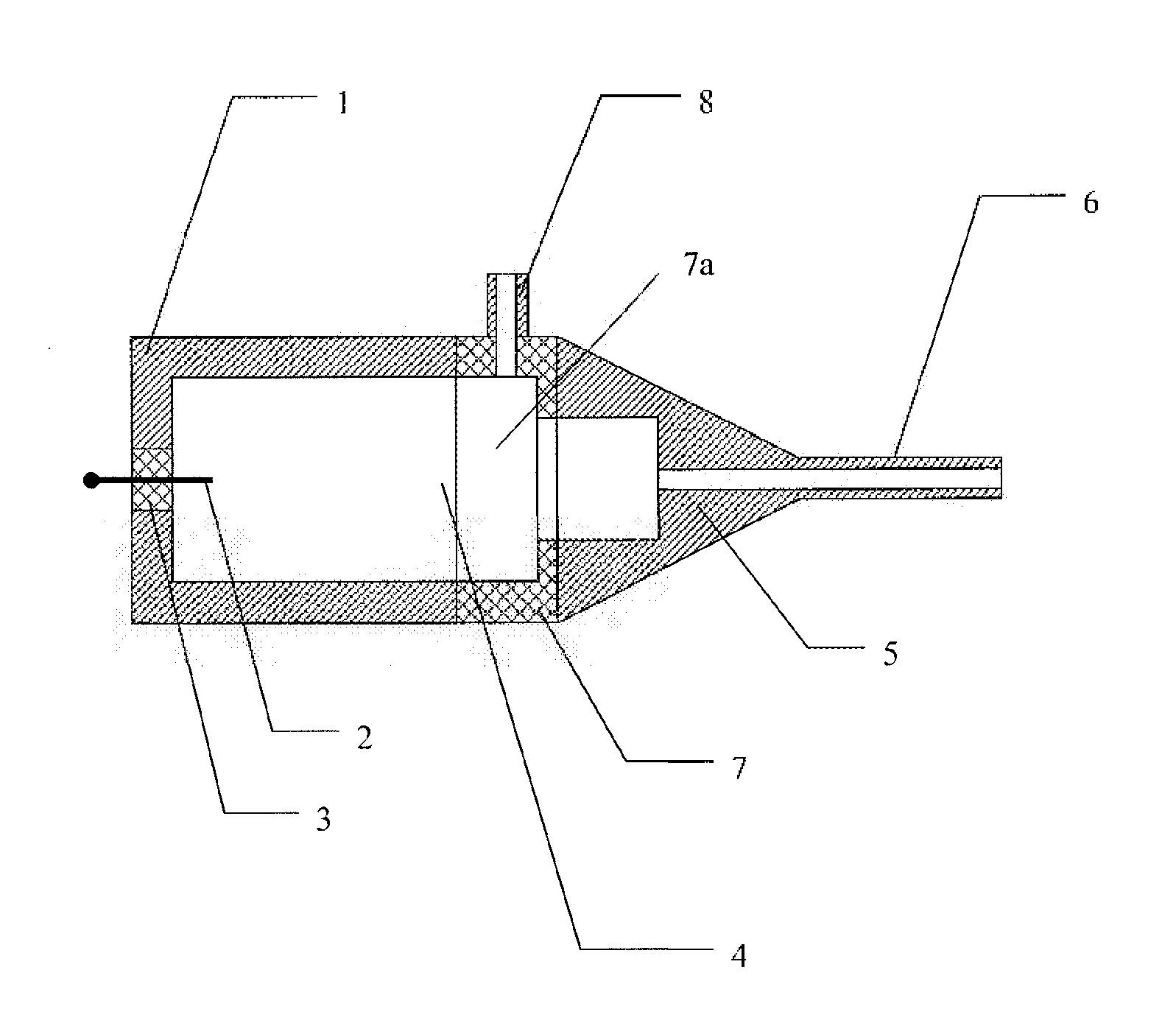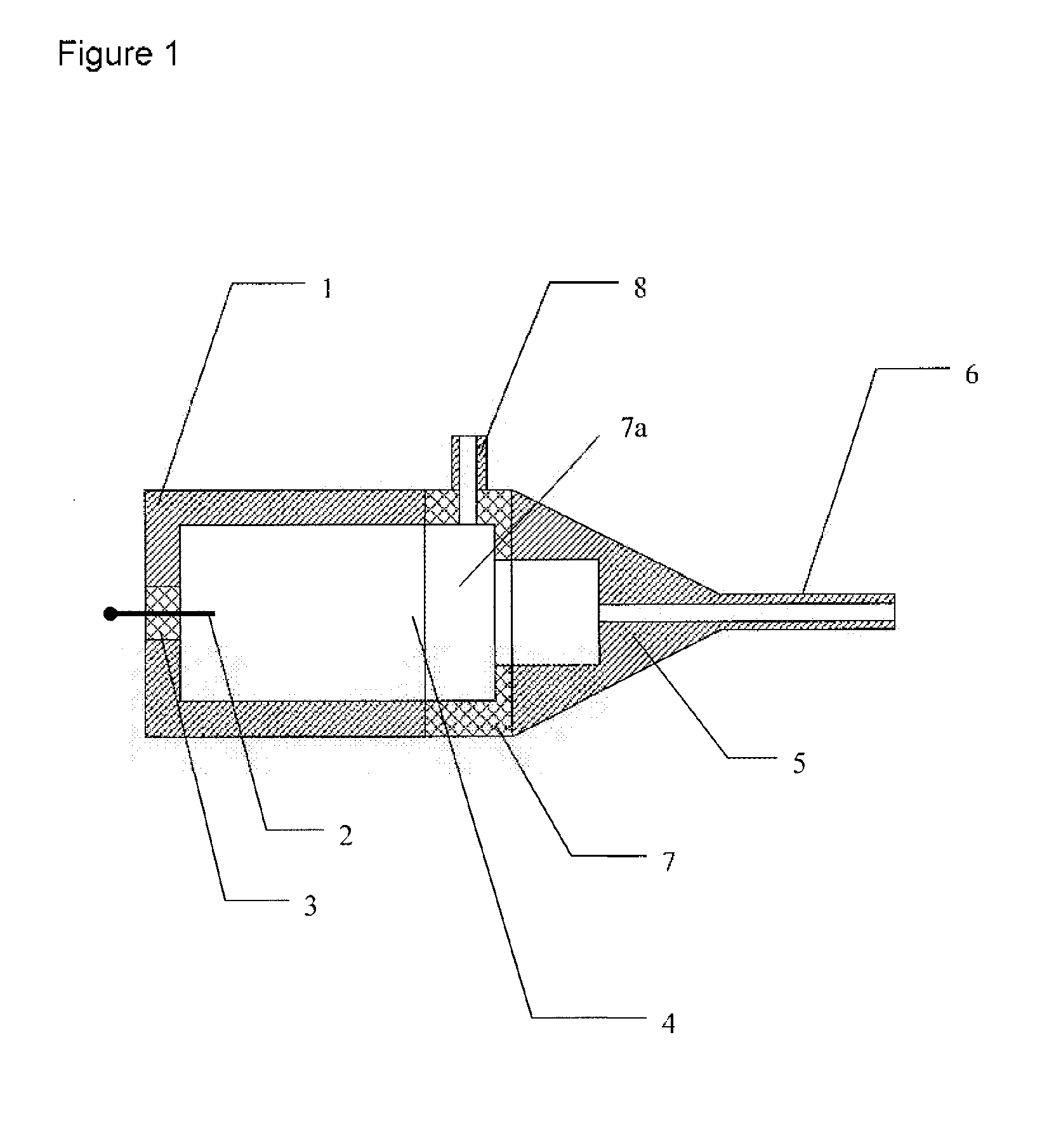Apparatus for charging or adjusting the charge of aerosol particles
a technology for aerosol particles and charging devices, applied in the direction of instruments, particle separator tubes, corona discharge, etc., to achieve the effect of increasing the stability and performance of the device, and substantially reducing the formation of deposits on the corona discharge electrod
- Summary
- Abstract
- Description
- Claims
- Application Information
AI Technical Summary
Benefits of technology
Problems solved by technology
Method used
Image
Examples
example 1
[0124]An apparatus was built according to the embodiment shown in FIG. 5. All metal parts were made from stainless steel. The non-conductive parts were made of PTFE and a gold electrode of 0.2 mm diameter was used. The internal diameter of the ion generating chamber (item 1 in FIG. 5) was 16 mm. The opening 10 in the second electrode 9 was 2.5 mm in diameter and the thickness of the second electrode 9 was 1.5 mm. The mesh 17 was formed from stainless steel and the openings in the mesh were 120 μm (measured as the diagonal dimension of the opening).
example 2
[0125]Another example of an apparatus according to the invention was built according to the embodiment shown in FIG. 4. All metal parts were made from stainless steel. The non-conductive parts were made of PTFE and a gold electrode of diameter 0.1 mm was used. The internal diameter of the ion generating chamber 1 was 14 mm. The opening in the second electrode 9 was 2.5 mm in diameter and the thickness of the second electrode 9 was 1.5 mm.
example 3
[0126]A further example of an apparatus according to the invention was built according to the embodiment shown in FIG. 5. All metal parts were made from stainless steel, the non-conductive parts were made of PTFE and the electrode was made from Au of diameter 0.2 mm. The internal diameter of ion generating chamber 1 was 12 mm. The opening in the second electrode 9 was 3.5 mm and the thickness of the second electrode 9 was 1.5 mm. The mesh was formed from stainless steel and had 120 μm opening (measured as the diagonal of the openings). The aerosol flow rate was 0.2 l / min.
Test Results
[0127]Examples of apparatuses of the invention were tested using Zn, sebacate, ZnO, soot atmospheric aerosols and Cr2O3 aerosols. In each case, the ion concentration was measured with an ion counter and the aerosol particle size distributions were obtained with an NPS500 instrument (Naneum).
[0128]An illustration of the long-term stability of the charging corona (measured using the apparatus of Example 2)...
PUM
 Login to View More
Login to View More Abstract
Description
Claims
Application Information
 Login to View More
Login to View More - R&D
- Intellectual Property
- Life Sciences
- Materials
- Tech Scout
- Unparalleled Data Quality
- Higher Quality Content
- 60% Fewer Hallucinations
Browse by: Latest US Patents, China's latest patents, Technical Efficacy Thesaurus, Application Domain, Technology Topic, Popular Technical Reports.
© 2025 PatSnap. All rights reserved.Legal|Privacy policy|Modern Slavery Act Transparency Statement|Sitemap|About US| Contact US: help@patsnap.com



